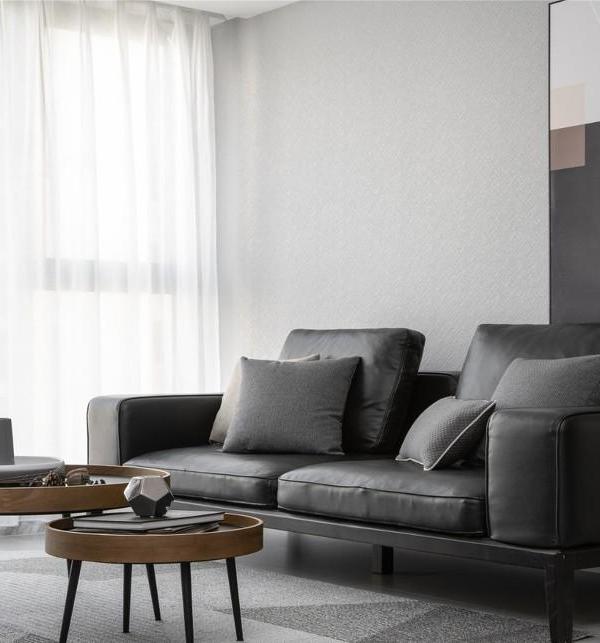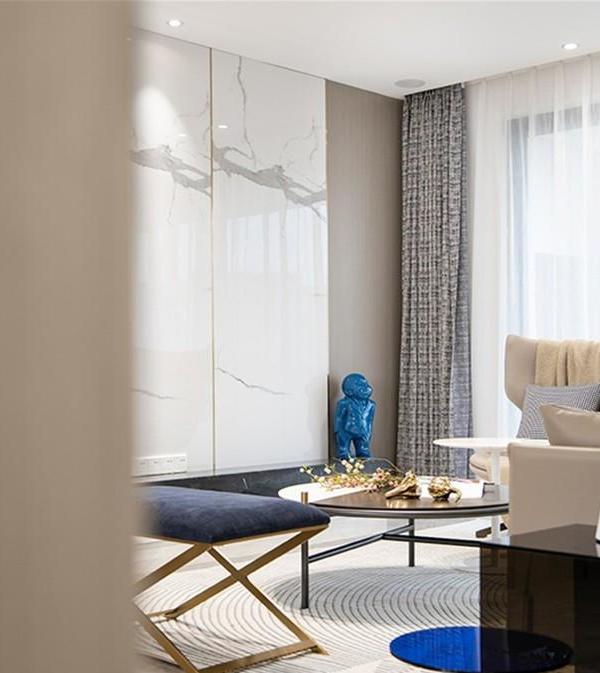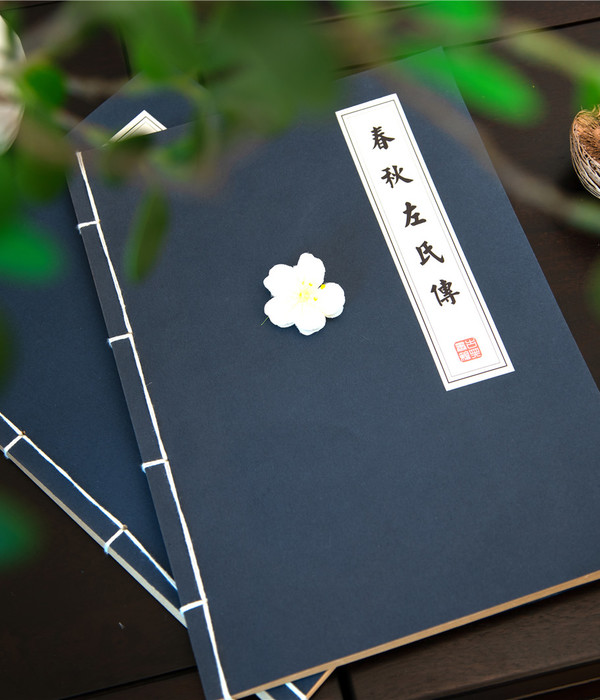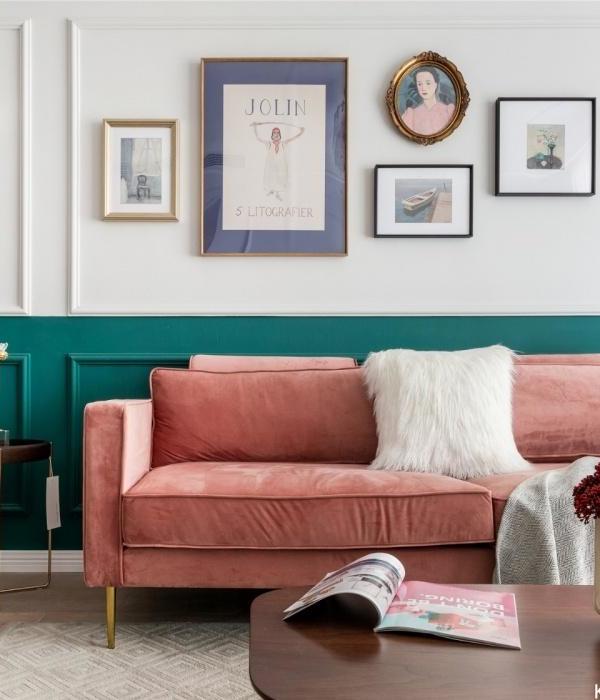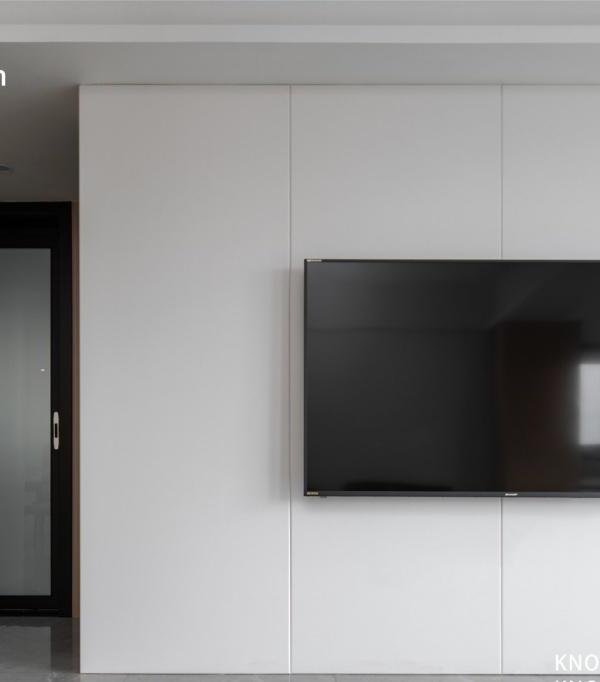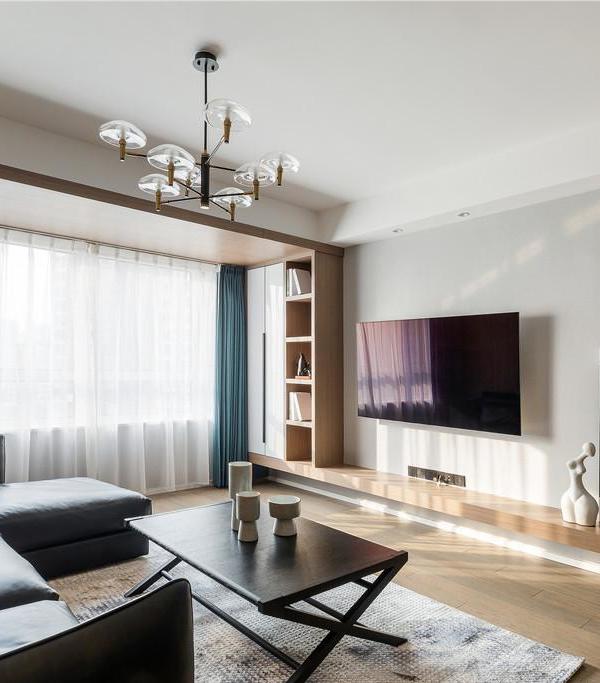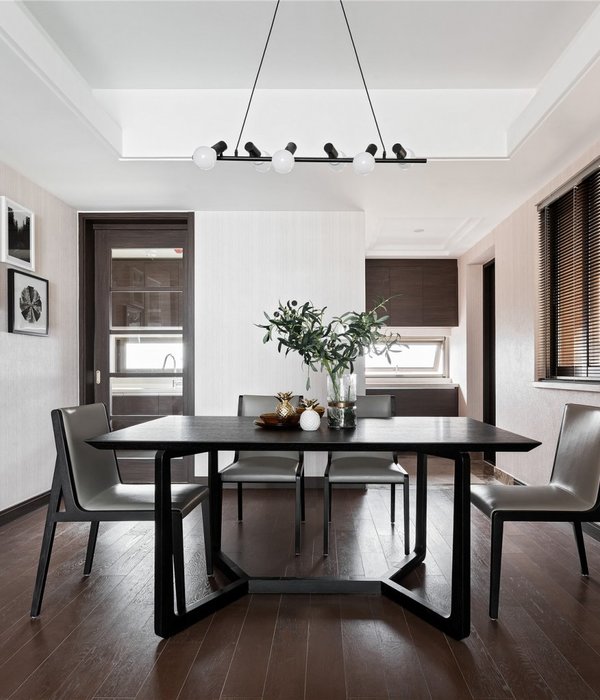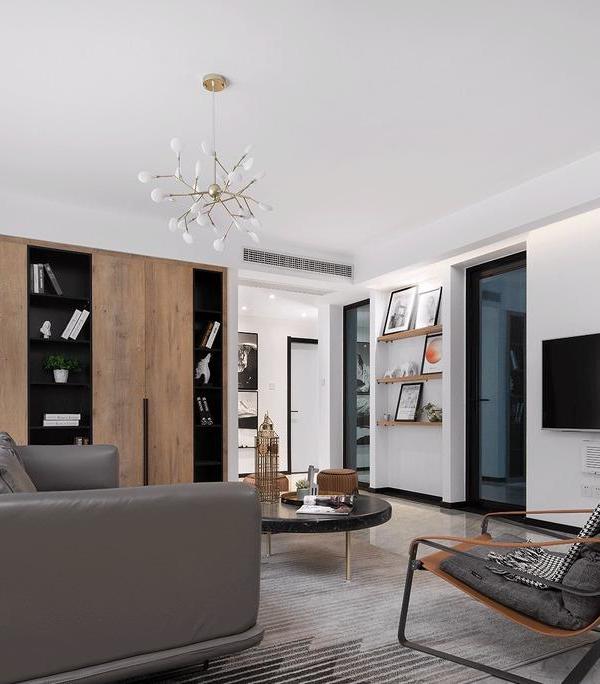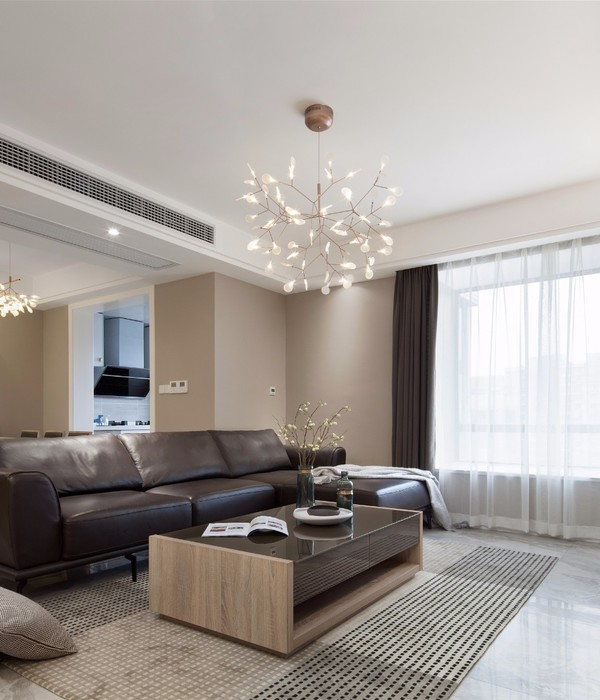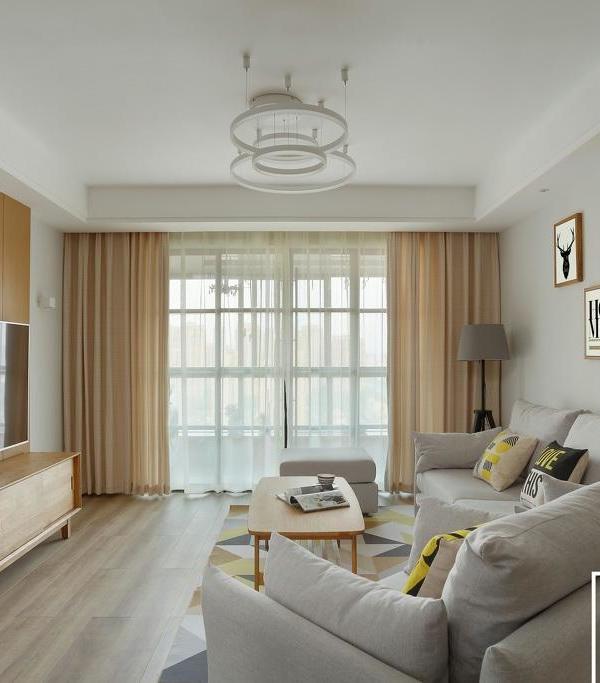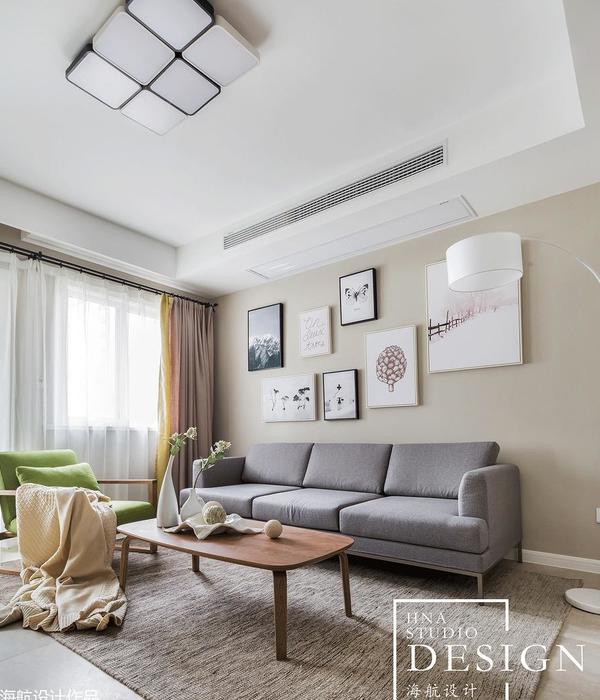这座住宅是为一对夫妇和他们的孩子而设计。业主二人在远离市中心的小镇买下了这块300平方米的、周围环绕着传统日式住宅的场地,希望在这里打造宽敞而明亮的居住空间,同时与南向的街道保持视线上的隔绝,以保证良好的私密性。为此,建筑师从传统的日式房屋中汲取灵感,重新考量了外部结构与室内空间的关系。
This house was designed as a new home for a couple with a child. Located in a town away from the urban core, the couple purchased this 300㎡ piece of land that is surrounded by traditional Japanse-style houses. The couple wanted the place to feel spacious and bright while keeping their privacy intact and blocking line-of-sight to the street-facing Southern side of the house. For that, we took inspiration from traditional Japanese-style houses to help us reconsider the relationship between the external structure and interior.
▼住宅外观,exterior view
大多数传统日式住宅都会设置一个大门以及通往内部入口的花园小路,这种做法可以让居住者和客人在进入房子之前在花园中得到放松。在该项目中,建筑师延续了这种对于动线和视线的控制,并将其运用到一种更加现代的语境当中。
Most of the traditional Japanese-style houses in the countryside have a gate and a pathway within a garden that leads to an entrance. Having a garden in front of the house allows passers-by and guests to rest their eyes on the garden first. We learned from this control of flow and line-of-sight, and applied it to the design of the house in a modern context.
▼车库旁的庭院,courtyard adjacent to the garage
▼入口空间,entrance
▼入口庭院景观,a landscaped courtyard
▼入口玄关,entry hall
随着居住者进入大门、穿越花园并走进房子内部,房间的私密性也在逐步提升。室内的交通动线经过了精心设计,能够保证从车库到起居空间(客厅、餐厅和厨房)再到卧室和浴室的整个过程的流畅性。车库空间也可以被视为大门处的围墙。厨房、客厅和餐厅的宽阔窗户为室内带来了清新的空气和自然光线,使人犹如置身于户外。客厅和餐厅的天花板比别处更高一些,墙壁和屋顶连接处还安装了玻璃窗,营造出一种漂浮之感,同时也为建筑赋予了独特而有趣的外观。这些窗户还提供了额外的光线和空气对流。
▼一层和二层平面图,1st floor and 2nd floor plan
As you walk through the front gate of the property, it leads you to the garden and then the house’s entrance, with the level of privacy increasing as you walk further into the space. We carefully designed the user flow inside the house, making sure to allow for smooth motion through the garage space, kitchen/living/dining room, bedroom, and bathrooms. The garage space works also as a gate-fence. The large windows in the kitchen/living/dining room bring the natural air and light inside, making the space feel spacious and imparting the feeling of being outdoors. The ceiling and roof of the living/dining room are set a little higher, and we used glass windows between the walls and the roof, creating an illusion of a floating roof that gives a provocative yet amusing look from outside. These glass windows also bring natural light to the home, making the room bright and airy.
▼起居空间(客厅、餐厅和厨房),kitchen/living/dining room
▼从餐厅望向客厅,view to the living room from the dining room
▼客厅细部,living room partial view
▼餐厨空间,dining room and kitchen
▼厨房,kitchen
▼从餐厅望向楼梯,view to the stair from the dining room
▼楼梯,stair
▼洗手池和浴室区域,basin area and bathroom
虽然传统日式住宅在外部结构与室内空间的连接上有着很大的优势,但时常也会因为较为昏暗的内部空间而遭到诟病。建筑师在学习这种优势的同时投入了很多精力去思考如何使空间变得更加宽敞和明亮,为的是创造出一个舒适的、能够适应当今生活方式的现代化住宅。
While Japanese traditional-style houses are a great example to draw from in designing a coherent relationship between an external structure and its interior, they have also been criticized for their dark interiors. Learning from this, we put a lot of thought into making the space bright and spacious to create a comfortable, modern house that fits today’s lifestyle.
▼抬升的屋顶提供了额外的光线和空气对流,the lifted roof brings natural light to the home, making the room bright and airy
▼首层平面图,ground floor plan
▼立面图和剖面图,elevation and section
Project Title: Kamikasa House Designer/Artist: ALTS DESIGN OFFICE Creative Director/Design Director/Art Director:alts design office Sumiou Mizumoto Client: private person Photographer: Kenta Kawamura Year: 2019/06 Wooden two-storied building The lot area:294.84㎡ Floor space:126.65㎡ 1floor area:126.65㎡ 2floor area:29.81㎡ The total floor area:156.46㎡
{{item.text_origin}}

